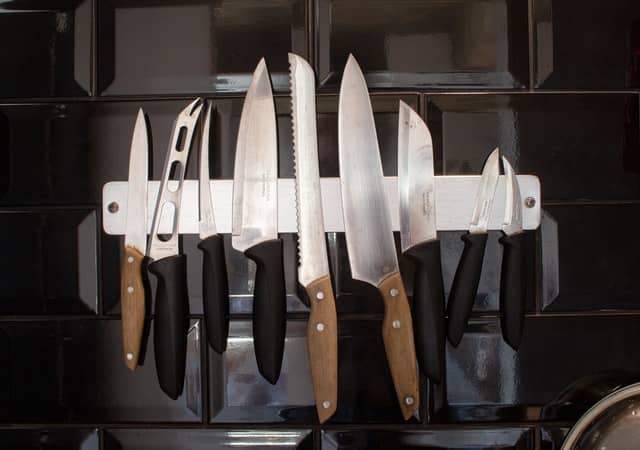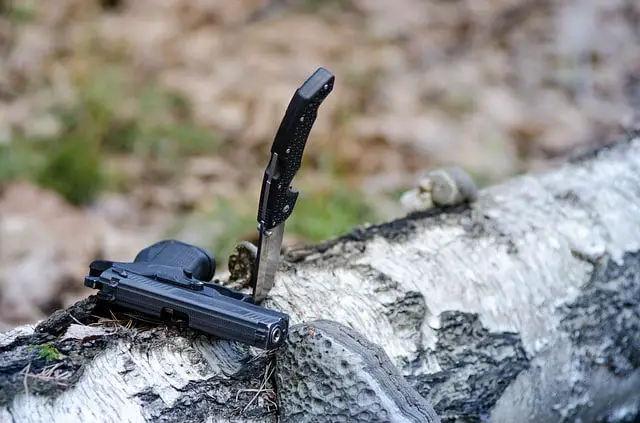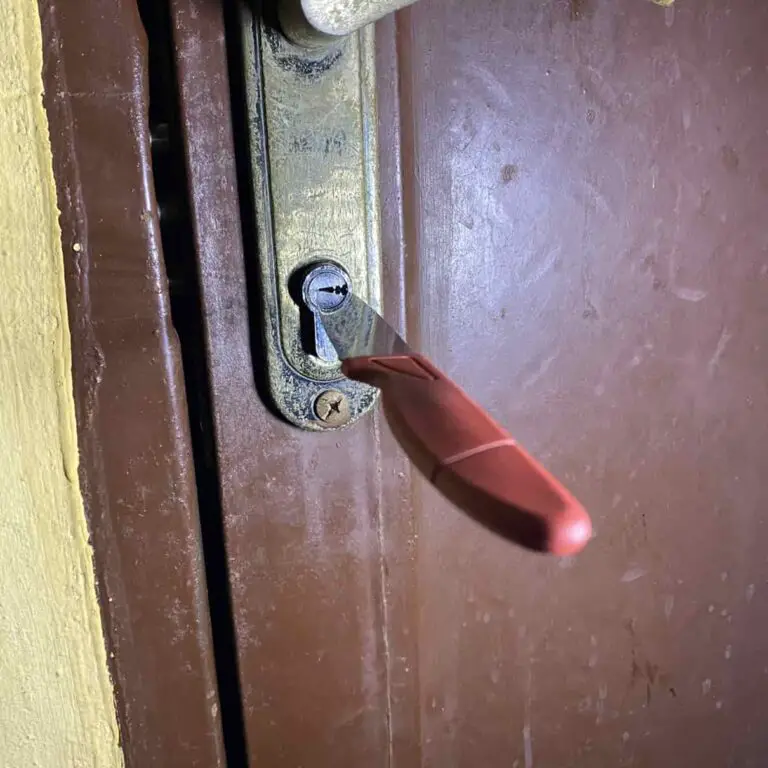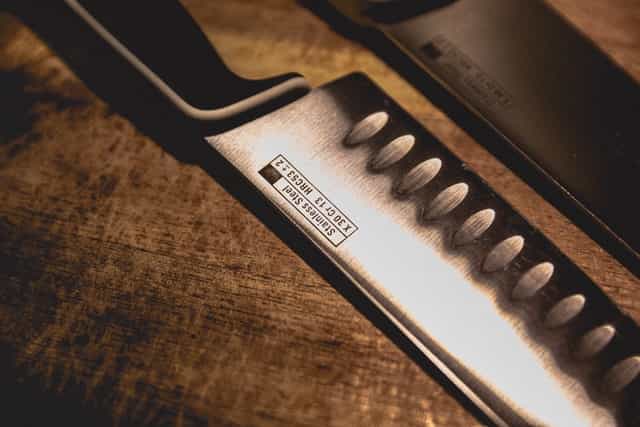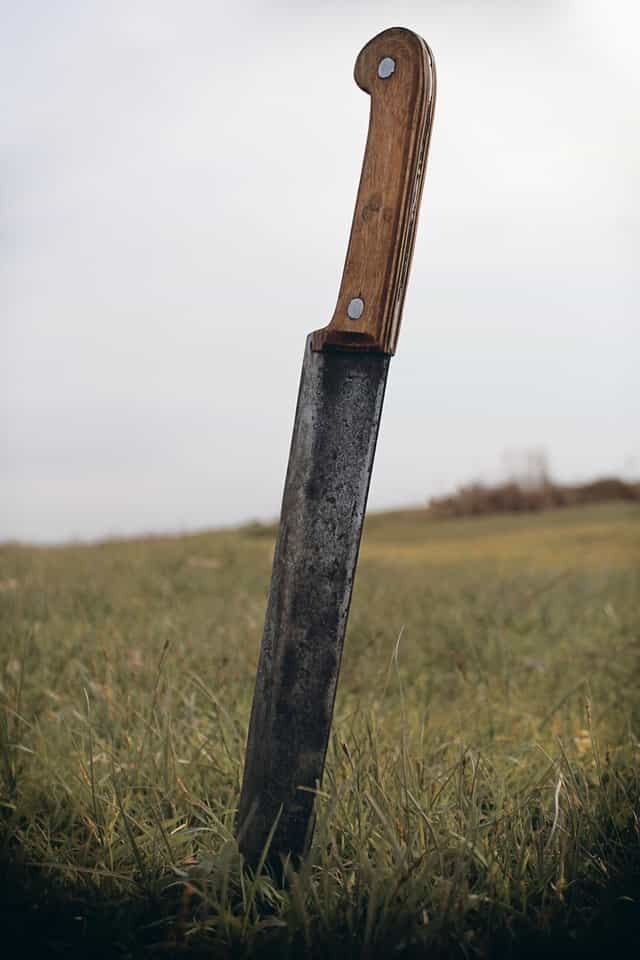Everyone who has ever used a knife/ blade of any kind knows that the sharper the blade, the better it is.
You can get things done faster, and even safer. Yes – dull knives are a huge injury risk waiting to happen.
However, how do you know if the cutting edge of your knife is sharp enough or in need of a trip to the whetstone?
In this piece, I discuss some of the different ways to test the level of sharpness on your knife – and tips to get that sharpened knife back if the blade turns out dull.
Table of Contents
Cut a Piece of Paper
I prefer this paper test for checking if a knife edge is sharp enough to be used, not necessarily the sharpest in the room.
Get a sheet of standard paper and cut the paper through with your knife. If the blade can make a straight sail from the top to bottom of the paper without catching it at any point, it is reasonably sharpened.
Now, the kind of paper that you use here is also important.
Notebook paper is one of the easiest (thin enough) to cut through. Next up should be printing paper (less thin) – and you can perform the ultimate paper test with glossy, magazine paper.
The latter kind of paper is harder to cut through and catch with an edge. If your blade makes it effortlessly through magazine paper, stop reading right now – it is does not need more sharpening for now.
Find a video here on the knife edge sharpness test from cutting a piece of paper.
Visual Check
Forgive me. This should have been the first method.
Take a moment to inspect the cutting edge of the knife. I can’t explain this, but there is a way to see the sharpness level of your blade when you look at it this way.
If you have worked with a new knife before, it comes to you easily.
Challenge the Knife
No, not to a duel. You don’t ever want to do that.
There are certain items around the home/ anywhere else you are that are somewhat slightly difficult to cut through – especially with a basic kitchen knife.
Some of such items, besides cardboard paper, are Styrofoam, other equipment packing, cork, etc.
The trick here is not to achieve a seamless cut, but not to have a hard time cutting and slicing through either.
Depending on the result you get, you’ll have a sudden realization of how sharp the edge still is.
Shave your Arm Hairs
Call me old-fashioned but I will break out my set of shaving sticks before I put a knife blade on my skin.
A lot of things could go wrong here if you mess around. Done right, though, this is also a fine test for the sharpness level of your blade.
PS NEVER TRY THIS if you have minimal body hair. This shave test is best for those with a lot of arm hair.
Going Technical
For those who use their knives professionally, some of the testing methods here might not cut it for you.
I found this Edge-on-Up Sharpness kit online that tests your knife’s edges and gives you real-life numbers and details on the sharpness level. You can even check different angle and points on the knife or compare with other knives in your collection.
I think it’s a fast and low-cost alternative to doing everything else here.
Pen Test

Take your knife to a pen and place the cutting edge on the plastic without applying much or any pressure at all.
A sharp knife should be able to catch the pen’s plastic on its own, but a dull edge will slide off.
This test is a little controversial in that there are different suggestions on how to do it. While some people prefer to have their knives perpendicular to the pen, going at a 15-degree angle will get you the best result.
When unsure, remember that you have other amazing, tested approaches on this list to check out.
Fingernail Test

For someone who doesn’t trust knives on their arm hairs, you should know I’m not about to advise cutting your fingernails with a knife.
Take the knife and gently place the blade against the back of your fingernails. Do not apply any pressure at all.
If the blade leaves a dent on your fingernail, it might not need sharpening.
The Tomato Test
The tomato happens to be one of the many vegetables that can be used to test your knife.
The choice of tomato used here should be slightly overripe. At this stage, the tomato does not only have tough skin but is also susceptible to bursting.
With a singular motion, try to slice through the tomato (preferably in half). If the knife cuts through cleanly, you might not need to sharpen it in the meantime. If the tomato bursts/ you get a messy cut as the edge slides through, you’ve got a dull knife at hand.
Try the Onion Trick

Onions are one of the most cunny food items.
Besides the fact that they make you cry from cutting them, they also have slippery skin that will frustrate a dull knife edge. When your knife is sharpened alright, though, the edge catches on to the onion just fine, slicing through effortlessly.
The Tri-Finger Test
There is a thumb test that I have left out of this list because I would personally not try it – so it doesn’t make sense to share it with you.
This three-finger test works on the same principle as the thumb thing, but you have a 3x higher chance of staying safe on this one.

Take your ring finger, middle finger, and index finger, pack them together and take them towards the knife as seen in the image above.
With your thumb at the back of the knife, apply pressure on the back of the knife ever so slightly that it presses against the three fingers.
Now, some people suggest trying to move your fingers just a small distance to test the sharpness but I am not trying to earn you a trip to the ICU. If the knife edge is still sharp, from pressing it down gently, the brain should send warning signs to your body.
Use the Knife
Sounds stupidly simple, doesn’t it?
Sometimes, the best test is to make use of the knife again. I prefer this model when it’s a knife that I’ve been working with before so I know what kind of performance I usually got from it – and what it is giving me now.
I saved this for last because this test can be biased if you work with multiple knives.
For example, my usual cooking knife is sharper than my paring knife and it has been that way since I bought them. Thus, my brain might be tricked into thinking that my paring knife is extremely dull just because the chef knife gave me a better experience.
The trick here is to reference the knife against itself, not something else.
What to Do When Your Knife Is Not Sharp Enough
Simple – sharpen it.
Now, there are different ways to go about that, depending on where you are:
- Sharpening with a proper tool like a whetstone – best choice, and I have written a guide on how to do that effectively.
- Sharpening without a sharpener – only do this when you do not have access to the sharpener at that point and you need to keep your tools razor sharp. I have also discussed some options to sharpen your knife without a stone or sharpener.
Please Note This
Some of the tests on this list (such as the finger test, shaving arm hair, and the fingernail approach) require high levels of safety. Do not engage in them if you are not sure of what you are doing.
While they work, it is better to be safe than sorry. Should you have any doubts about pulling them off safely at all, revert to any of the other tests on the list instead.
Don’t worry – they are all great in determining your knife’s sharpness in their ways without cutting yourself while at it.
Wrapping Up
And with that, we are done.
Let me know which one of the sharpness tests above you liked the most, have tried before or works best for you.


